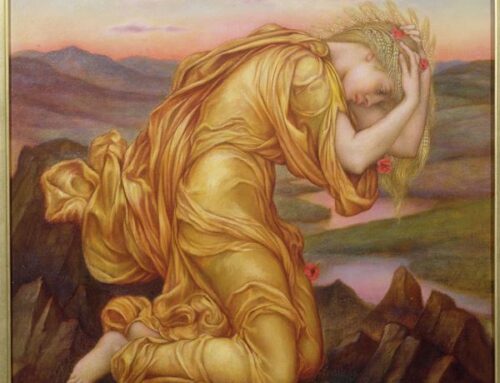Today marks the 100th anniversary of Bram Stoker’s death.

Although best known as the author of ‘Dracula’, Stoker was a keen theatre enthusiast and during his career worked as a personal assistant to actor Henry Irving and, later, as business manager of the Lyceum Theatre. He was also part of the literary staff of the Daily Telegraph, and had a strong interest in science, medicine and the occult. Here at the De Morgan Foundation, we know Stoker as one of the lucky few who had the chance to interview the quiet and reserved William De Morgan.
The article, ‘The Work of William De Morgan’ by Bram Stoker, featured in the July 1908 issue of ‘World’s Work’. Although not a certainty, the fondness of Stoker’s words and the ease with which the introverted William reveals details of his life and work suggests that he and Stoker may have been friends. The article focuses on William’s reflections on his foray into writing, which began with his novel ‘Joseph Vance’, published in 1906. When Stoker asks about his methods of character creation, William offers a fascinating reply:
Bram Stoker in 1906
“The process is a sort of nebulous idea, with a concrete heart somewhere in the mist. A heart which can from the first illuminate in some degree and which can beat in time and grow more and more and more vital; till at last it emerges from the mist. And then, strangely enough, you are not astonished when you find that the creature which has newly declared itself is a friend of your lifetime, of your dreams. When this point is reached the characters often act and even speak for themselves. At times it seems as if one can almost hear their very words.”
William seems to come alive with enthusiasm at the mention of his experiments as an inventor. William created a refining sieve and a smoke-consuming firegrate, both beneficial to his pottery work, yet he speaks most vividly about his invention of a duplex gearing for a bicycle. He even leads Stoker to his garden shed to show off his complex system of gears and rubber bags; Stoker seems suitably impressed:
“It is a really admirable scheme, and I think it must yet come into use.”
William let his patent lapse and decided to turn his attention to writing, but he clearly retained a pride in his various inventions.
Curiously, Stoker dedicates a paragraph to describing the shape of De Morgan’s head, demonstrating a typically Victorian interest in phrenology, particularly noting William’s “bumps of imagination” across his forehead. Considering also the references to palmistry, it raises the question of whether Stoker shared De Morgan’s fascination with spiritualism.
 William’s responses to questions are often as elaborate and intricate as his ceramic designs, and Stoker exhibits admiration for him and his “works of supreme and elaborate beauty”. Though this article reveals more of De Morgan’s character than Stoker’s, it is nevertheless a fascinating read, and particularly apt for today, the centenary of Stoker’s death.
William’s responses to questions are often as elaborate and intricate as his ceramic designs, and Stoker exhibits admiration for him and his “works of supreme and elaborate beauty”. Though this article reveals more of De Morgan’s character than Stoker’s, it is nevertheless a fascinating read, and particularly apt for today, the centenary of Stoker’s death.
William De Morgan and his forehead
Emma Coleman, Museum Officer






